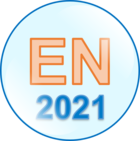This thread is dedicated to the upcoming webinar: Designing Cell phone Camera Lenses with an Interoperability Workflow – Part 2. Any questions received during the webinar will be responded to as a reply on this thread. Feel free to post your own questions! The speaker will be notified and will respond as long as the thread is still open.
Be sure to subscribe to this thread if you want to see additional discussion regarding this webinar topic. The thread will be open to new replies for a limited time following the event.
[The event has concluded]
Webinar details
Date: Thursday, September 22nd
Time: 6:00 - 6:45 AM PDT | 11:00 - 11:45 AM PDT
Presenter: Esteban Carbajal, Senior Product Manager
Abstract:
Cellphone camera designs are required to meet evermore stringent performance specifications to compete in the field. Laboratory testing typically occurs late in the manufacturing phase where any previous errors in estimates that are found will cause significant schedule delays and cost increases. Simulation can enable customers to find these errors earlier in the process and prevent costly mistakes. In this second part of the Designing Cell phone Camera Lenses with an Interoperability workflow webinar series, Esteban Carbajal will present a streamlined workflow that includes Ansys Mechanical, and the STAR technology featured in Ansys Zemax OpticStudio Enterprise to easily examine the impact on optical performance at several points in a broad temperature range.




